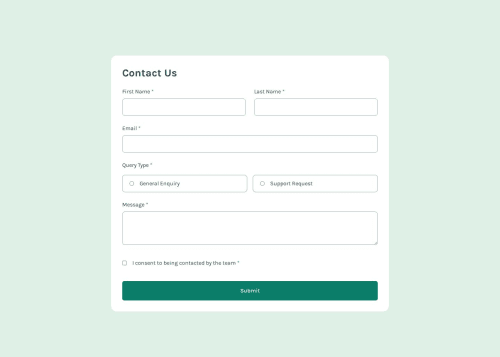Continue Form Practice

Solution retrospective
This was more trial and error than anything (although there are a lot more errors than I'd hope!) to keep practicing forms in React.
What challenges did you encounter, and how did you overcome them?Yesterday when I did the form, I was happy to get it to work. Now - I have mixed feelings because now that I kinda understand the inner workings, I realize that there is more to it than simply styling the form.
Design Challenges
- In general, I still need to build confidence when to use borders, outline and ring.
- Styling and animating the success message - struggled with this because this is my first time.
- Overall animations. I want to get to the point where the design and the user interactions are fluid.
Logic Challenges
- I was able to abstract the input type='text' into its own component but for the other field types, such as checkboxes and radio, I am still struggling to control them. They react differently to styling so I will have to keep working on them to get confident, same as I did with the text inputs. I will keep working on getting familiar with forms as is, before checking out React form libraries.
- I attempted and failed (again) to use and understand
useReducer, but realized I will need two objects to interact - the user input object and the error object, so I went back to usinguseStateinstead. - I also attempted to use
useEffectto make errors appear depending on the user input before submit. Opted to have the errors show up on submit instead.
Please log in to post a comment
Log in with GitHubCommunity feedback
No feedback yet. Be the first to give feedback on tOnski86's solution.
Join our Discord community
Join thousands of Frontend Mentor community members taking the challenges, sharing resources, helping each other, and chatting about all things front-end!
Join our Discord